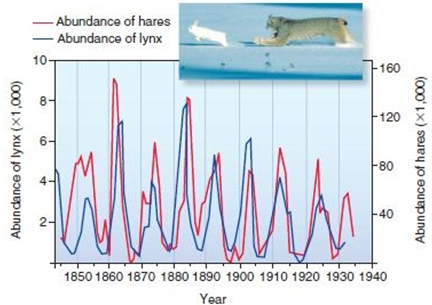In plant cells, starch is stored in ____
a. chloroplasts
b. amyloplasts
c. chromoplasts
d. vacuoles
e. leucoplasts
ANSWER: b
You might also like to view...
Scientists have discovered that when they provide supplemental food for hares, their density tripled. The figure above shows cycles of lynx and hare populations over a century's time. What do you predict would happen to the lynx and hare populations in an area where hares were provided supplemental food for one year?

A. The lynx population and the hare population would increase simultaneously, and stay at a stable high level permanently.
B. The hare population would increase, but the lynx population would be unaffected.
C. The lynx population would decrease as hares increased due to exploitative competition, then slowly rise back to the original level.
D. The lynx population would increase 1-2 years after the hares increased, then both would continue cycling down and up.
“Solutes move from the blood in capillaries
into adjacent tubules.” This is a description of
a. filtration. b. reabsorption. c. secretion. d. elimination. e. excretion
How might ants on an acacia tree serve in a mutualistic relationship?
A) The ants fight off potential herbivores. B) The ants carry disease. C) The ants bring nitrogen to the tree. D) The ants bring sugar to the tree.
Mutation frequency is the
A) number of mutations per gene per generation. B) number of mutations per nucleotide per generation. C) number of mutations per cell per generation. D) number of a specific mutation in a defined population. E) total number of mutations in a defined population.